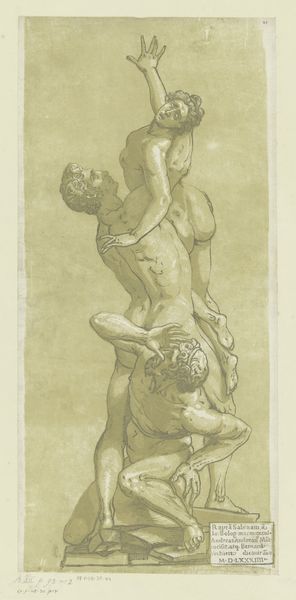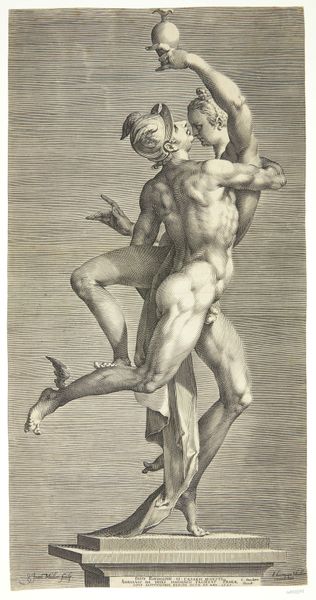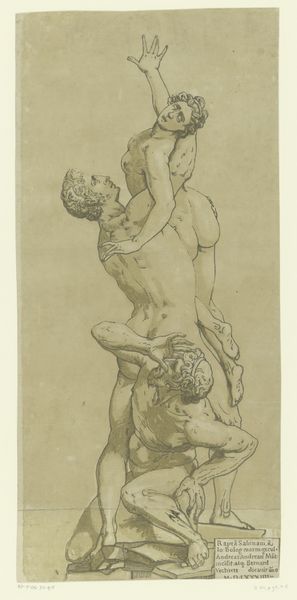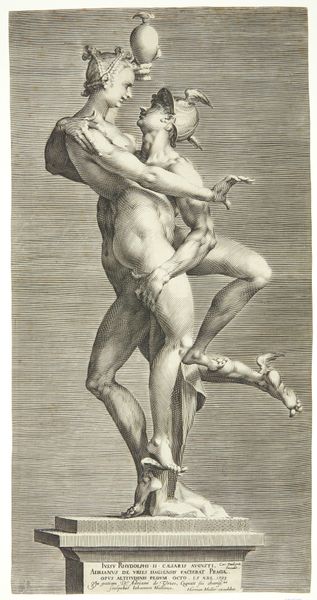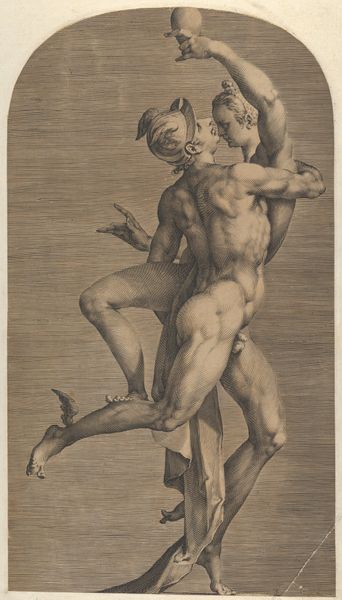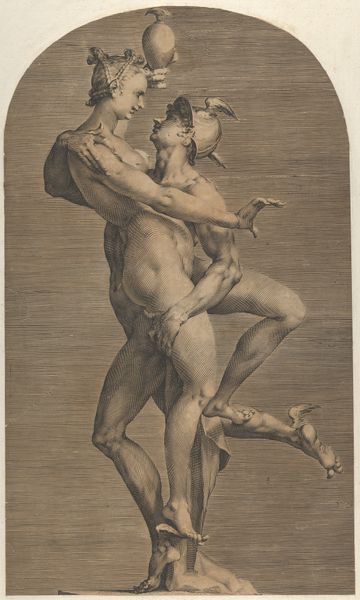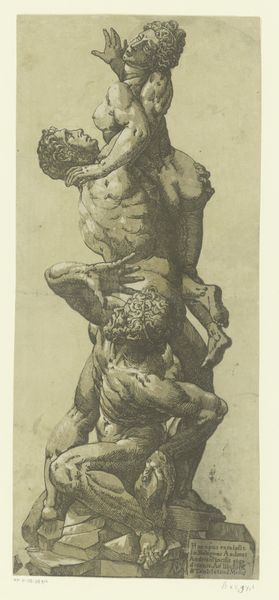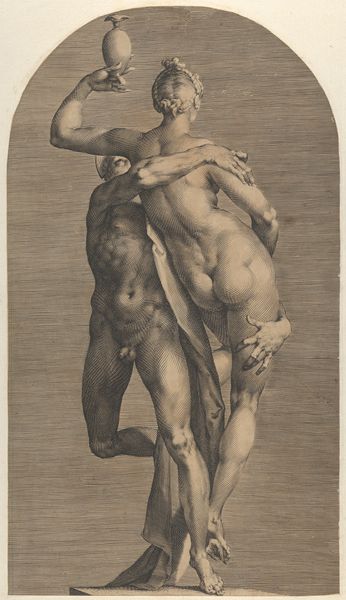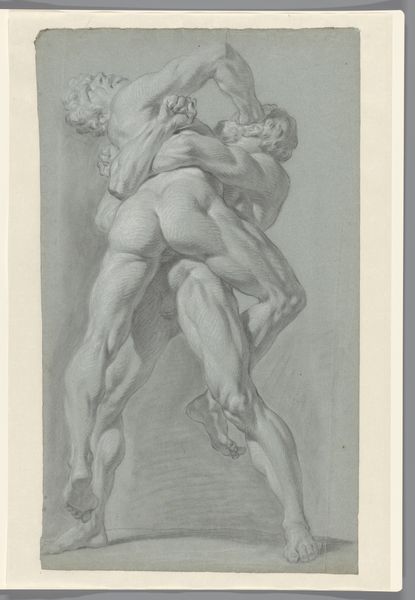
drawing, engraving
#
drawing
#
caricature
#
mannerism
#
figuration
#
11_renaissance
#
history-painting
#
engraving
Dimensions: height 431 mm, width 194 mm
Copyright: Rijks Museum: Open Domain
Curator: Welcome. We are standing before Andrea Andreani’s "The Rape of the Sabine Women," made in 1584. It's currently held at the Rijksmuseum. Editor: The upward thrust of the composition is quite striking. It reminds me of flames—hot, chaotic, passionate, but undeniably violent. Curator: Andreani made this using an engraving technique, likely after a sculpture or drawing related to the subject. He wasn't merely replicating; he was participating in the broader artistic dialogues concerning classical themes. Editor: Observe how the muscular forms of the figures are rendered with such emphasis! It's almost theatrical. The bodies seem to spiral, drawing our eye upward along with the drama of abduction. The Mannerist style is so evident here. Curator: Mannerism valued artifice and expressive exaggeration. Engravings, like this, helped circulate Mannerist aesthetics beyond the elite, bringing sophisticated styles into more homes. Consider the paper it is printed on, its likely production place and its distribution through period commerce as critical components to fully grasping this image's reach. Editor: Absolutely, and look at the color. That almost monochromatic effect focuses the attention entirely on form and line. Curator: It does draw your eye to those entwined figures. It reminds us, this work also circulated historical ideas and served certain cultural purposes. What this object made of ink and paper may tell us about value and who gets to ascribe it is as telling, to me at least, than art historical elements alone. Editor: Yes. Art can shape historical perception, influence tastes, and so much more than formal mastery. Thank you for the fresh outlook. Curator: A necessary reminder, indeed, of all there is to consider when reflecting on images from the past.
Comments
No comments
Be the first to comment and join the conversation on the ultimate creative platform.
